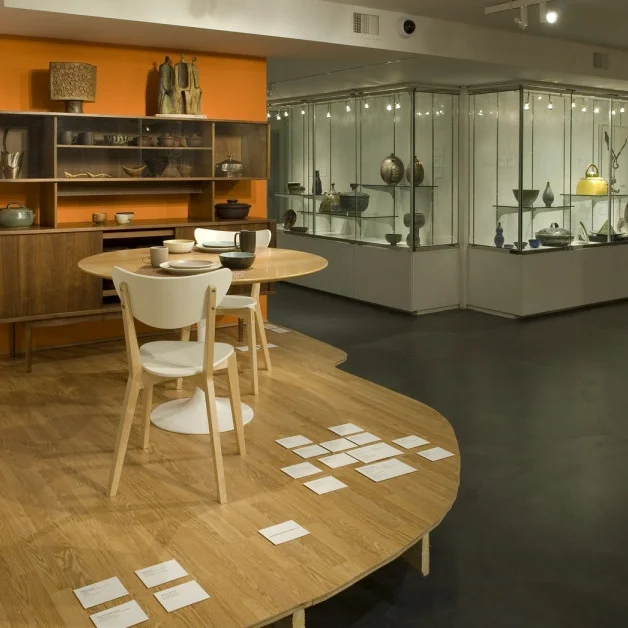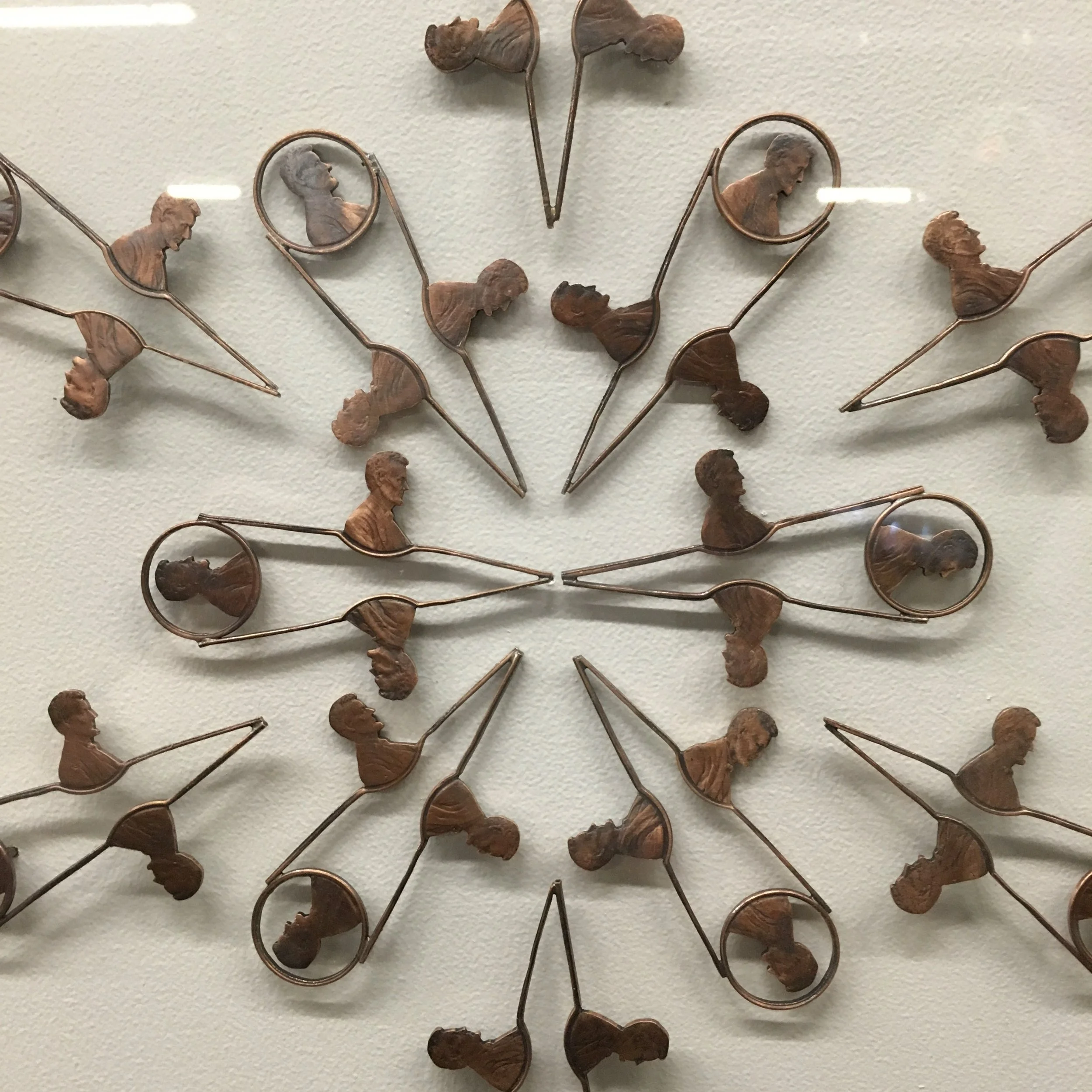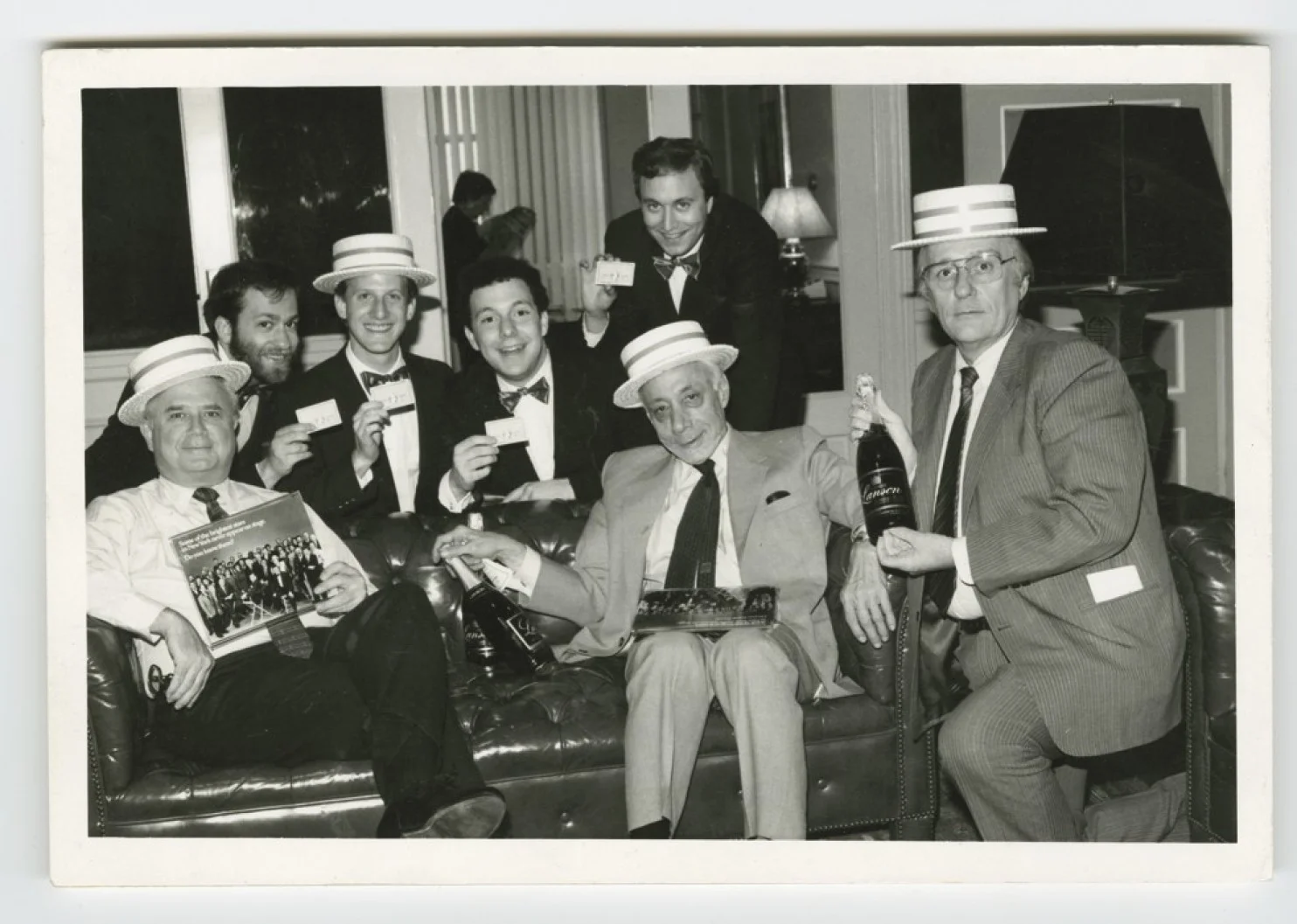The next time you find yourself hate-reading a fawning profile of a photogenic young Brooklyn potter whose hot-pink-rimmed wares are transforming the “stuffy world of ceramics into a cool new craft” (or something to that effect), navigate yourself away from there, and instead visit the website of the Museum of Contemporary Craft (MoCC) in Portland, Oregon. Here you will find a digital record of nimble cultural production that will knock your socks off.
Read MoreVisitors to the official website of the Pussyhat Project are welcomed with an exclamation of color and joy from founders Krista Suh and Jayna Zweiman: “We did it! We created a sea of pink!” And indeed they did. The Women’s March on Washington, D.C., and the 600 allied marches across the United States and the world, drew between 3.3 and 4.6 million protesters, making it one of the largest single-day demonstrations in the nation’s history.
Read MoreThe massive Globe Dye Works complex in Northeastern Philadelphia smells of freshly ground coffee. Visitors are greeted by a gigantic antique scale and countless spools of thread in every imaginable hue, arranged just so. The building hums with activity as a network of small-batch entrepreneurs plan special event menus, frame artwork, and—evidently—roast coffee beans to perfection.
Read MoreReading the post-election commentary from my vintage-furnished stop in the Acela bubble this week, I have felt a kind of nausea and dread that I had not experienced since I nearly lost my stepfather, who worked in the North Tower of the World Trade Center, on September 11, 2001. He survived, but none of us has ever been the same. I knew then that I would devote my life and abilities to the community I love: people who make things, people who enrich others’ lives by teaching and mentoring, people who shine light on injustice through their artwork, who help us find connection with each other.
Read MoreRiotously colorful, densely patterned, and unassailably fabulous, Vlisco fabrics have, for decades, been tailored into shift dresses, power suits, and formal gowns for Central and West Africa’s cosmopolitan elite. Their patterns and palettes evince an instantly recognizable aesthetic. And there are scores of Vlisco imitators: Chinese knockoffs are sold on city streets all over the world. But are any of these fabrics in fact African?
Read MoreSince the advent of online journalism, social media, and the increasingly partisan landscape of cable news, Americans have started to do something that researchers call “self-segregating” when it comes to learning about politics and current events. Many of us are watching, just not together: according to a recent Pew Research Center analysis of Nielsen Media Research data, the 2016 presidential election has led to an 8 percent jump in prime time viewership of cable news.
Read MoreStar Trek reruns are a little like Carpenters greatest hits albums: You’ll rarely find someone proclaiming unironic devotion to either one, but clearly someone is watching and listening, because ratings and sales figures don’t lie. Nerdy self-consciousness aside, 2016 has been a big year for Star Trek. Following on the heels of 2009’s acclaimed feature film reboot directed by J.J. Abrams, and Star Trek Into Darkness in 2013, the franchise’s latest offering, Star Trek Beyond, has been met with praise by critics and fans alike.
Read MoreThe site-specific sculpture inspired by the Milwaukee Breakwater Lighthouse is the largest work
Maggie Sasso has ever made. It might also be the loneliest—for the lightkeepers, conditions were
tough, isolated, and could be very dangerous—but it is likely to encourage viewers to learn more
about the landmark. The lighthouse has long been an object of fascination: there was something about its distant glow that made land-dwelling folks curious and perhaps a little jealous. Once an active and necessary beacon in Lake Michigan’s Milwaukee Bay, later a mysterious, deteriorating Art Deco artifact, today it is an historic landmark about to embark on a new life as a “lakefront attraction.”
Of all the astonishing things Roberto Lugo has done in his career — from creating a DIY potter’s wheel and mixing his own clay from dirt in an urban scrapyard, to creating a new genre of hip-hop-inflected political porcelain — the most radical might be that he is head over heels in love with something rather uncool in the contemporary art world: skill. In his exhibition Defacing Adversity: The Life and Times of Roberto Lugo at Wexler Gallery, Lugo’s creations are bursting with wit and formal mastery, even as they sport the drips and brush marks of graffiti and liberally-applied glaze. The vessels exude a forceful sense of patriotic bling; for his first solo exhibition in his native city, in a gallery within walking distance of Independence Hall, Lugo celebrates the US founding fathers, public intellectuals of color, musicians, poets, and presidential candidates.
Read MoreTo hear Pauliina Pöllänen talk about her recent work, lacking any visual clues or prior knowledge of her practice, you might think that she has been busy building houses, or perhaps sculptures you could walk around in. Pools of glaze ‘flood like water to the basement in the Springtime’ (an annual event in Finland) and works take shape built ‘around space’. It is the particular phrase “primordial architecture” (Pöllänen’s own) that seems to capture the spirit of this idea with the most nuance.
Read MoreLeave it to a former professional studio potter to organize a wide-ranging exhibition of postwar ceramics that’s relatively free of hangups about form and function. The Ceramic Presence in Modern Art: Selections from the Linda Leonard Schlenger Collection, currently on view at the Yale University Art Gallery, demonstrates connections of various sorts between works in clay and paintings, drawings, and other forms of sculpture from the period. The exhibition’s core material, and its initial inspiration, is the collection of Linda Leonard Schlenger, one of the world’s foremost collectors of post–World War II American ceramics.
Read MoreOn or off stage, dancers always seem to hold their bodies in that instantly recognizably trained posture: heads held high, backs straight, no trace of a slouch. They look as though they’re being pulled gently upward by an invisible force, even when doing the most quotidian tasks. That hard-to-emulate quality — the very antithesis of the hunched-over pose we adopt while squinting into our smartphones — is probably best defined as “grace.”
Read MoreWhen Ruth Asawa (1926–2013) died in August, 2013, the obituaries that appeared in newspapers and magazines across the US characterized her life’s work with a diverse array of descriptors. In the pages of the New York Times, she was an “artist who wove wire.” In the Los Angeles Times, a “California sculptor.” In an article appearing in the SFGate, she was “overlooked.” And according to Art+Auction, she had enjoyed a “late, meteoric rise from obscurity.”
Read MoreRemember when an evening at a Broadway musical required scurrying past seedy, adults-only shops and all manner of colorful entrepreneurs on the way to the theater? If your impression of Times Square dances with Disney characters and shiny retail meccas, you probably don’t remember. But Michael Riedel’s new book, “Razzle Dazzle,” brings this gritty world back to life. His history of Broadway in the 1970s and ’80s paints a candid and thoroughly entertaining portrait of the period just after New York theater’s golden age.
Read MoreWhen the news broke yesterday that Google had a brand new logo — the biggest change to its visual identity since its inception in 1998 — the design twitterverse exploded with commentary about the thickness of the new letterforms and their conspicuous lack of serifs. On Tuesday morning, typographers chimed in with praise and scorn, often about the perception that the rounded characters paired with the company’s signature color-block hues seem too childlike for a technology behemoth.
Read MoreFive years from now, on the hundredth anniversary of women’s suffrage in the U.S., an American woman of distinction will appear on the ten-dollar bill, with Alexander Hamilton retained somewhere on the note. This decision, announced last week by Secretary of the Treasury Jack Lew, has been met with considerable puzzlement from those who wonder why we would demote Hamilton, the founder of our financial system, instead of Andrew Jackson, who was the architect of the Trail of Tears, an opponent of central banking, and the target of the grassroots campaign to get a woman on the twenty-dollar bill, led by the group Women on 20s.
Read MoreIt’s an illuminating mental exercise to ponder: what if Dr. Albert C. Barnes, the pharmaceutical tycoon and physician who assembled an unmatched collection of Post-Impressionist and early Modern paintings in Philadelphia, was actually an installation artist before his time? This is the central conceit that inspired The Order of Things, now in its final days at the Barnes Foundation. Curated by Drexel University art history professor Martha Lucy, the exhibition comprises three distinct installations by Mark Dion, Judy Pfaff, and Fred Wilson.
Read MoreOne of the greatest pleasures of teaching design history to college students — apart from watching their reactions as I play excerpts from grouchy interviewswith the legendary Braun designer Dieter Rams in class — is time travel. Not the actual temporal kind, but the generational kind, where you realize that you’re the only person in the room who remembers the 1980s, and everyone else in the room is really curious about that.
Read MoreIn the third season of Orange Is the New Black, which premiered on Friday, Piper Chapman is no longer be the central focus of the story. Over the course of the season, characters we haven’t heard much from before, including the soft-spoken Chang, get their backstories revealed, and new characters arrive to offer Litchfield Penitentiary more intrigue. This has long been one of the best things about OITNB: the way it pivots from prison scenes to places on the outside—the homes, apartments, playgrounds, and schools where characters had lives before jail—then back again to the beige halls of Litchfield.
Read MoreChances are, you’re more familiar with Eve Arnold’s photographs than you are with the photographer herself, who died at the age of 99 in 2012. Arnold’s images, published in an array of legendary periodicals including Life and London’s Sunday Times, captured the big personalities of her day in moments of reflection and unguarded repose. Joan Crawford receives spa treatments and gets fitted for a new dress; Malcolm X reclines with his hands cradling the back of his head; Marilyn Monroe applies makeup in a bathroom mirror; Elizabeth Taylor and Richard Burton relax at a pub in Shepperton, England, enjoying a respite from Burton’s work on the set of “Becket.”
Read More



















